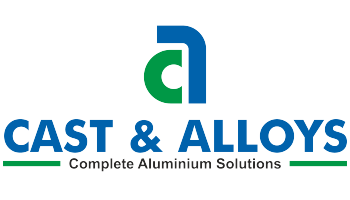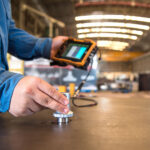Within the manufacturing industry, aluminum forging is a great illustration of the fusion of art and science, where innovation and traditional skill coexist.
And right in the middle of all this is the special job of designing tools and molds or die. In this intricate process every bend, every shape, and every detail matters. It’s not just about technical qualification but also the fusion of careful engineering with creative thinking and planning. It dictates the quality and efficiency of the final product.
In this blog, we’ll explore the nuances of this craft and how Cast & Alloys is leading the charge in revolutionizing tool and die design in aluminum forging.
Understanding Aluminum Forging
Before delving into the nuances of tool and die design, it’s essential to appreciate the canvas on which this artistic science is applied – Aluminum.
Aluminum’s distinct qualities have earned it a distinctive role in the manufacturing industry. It is an excellent option for a variety of applications due to its lightweight, remarkable malleability, and corrosion resistance. From aerospace components to automotive parts, aluminum’s versatility knows no bounds. The magic begins when this unassuming metal is subjected to the transformative heat of forging. However, harnessing its potential through forging requires expertise and precision, which is where tool and die design comes into play.
Understanding the Basics of Tool and Die Design
Tool and die design in aluminum forging involves creating precise molds and shaping processes to transform raw aluminum material into desired shapes.
Tools are devices used to shape or form materials, while dies are specifically used to shape metals through processes like forging. In aluminum forging, tool and die design plays a critical role in ensuring the accuracy and efficiency of the manufacturing process.
Tool designers focus on creating the molds that will shape the aluminum. These molds are designed with intricate details to achieve the desired final shape of the forged aluminum part.
Die designers, on the other hand, focus on engineering the processes that will be used to shape the aluminum using these molds. This includes determining the optimal temperature, pressure, and deformation rates needed for successful forging.
Together, tool and die designers collaborate to ensure that the molds are precisely crafted and that the forging processes are carefully planned to produce high-quality aluminum components with minimal defects.
Understanding the Anatomy
The concept of Tool and die design revolves around a thorough grasp of how metals, particularly aluminum, react when subjected to heat and pressure. Engineers and designers delve into the intricacies of how aluminum flows, responds to changes in temperature, and the ideal pressure levels necessary to mold it effectively.
The design process involves treating the die as a platform for creativity and innovation. Each element of the die’s structure, from its curves to its angles, is meticulously fashioned to direct the aluminum into its ultimate shape. This process mirrors the precision of sculpting, where artistic vision merges seamlessly with mathematical precision to achieve the desired outcome.
The Fusion of Heat and Form
In aluminum forging, the goal is to heat the metal just right and shape it perfectly. The die is just like the one incharge of making sure the metal flows smoothly into the shape we want.
Temperature is super important during forging. A few degrees too high, and the aluminum becomes unruly; a few degrees too low, and the shaping process falters.
This process is like an art form. It’s not just about following rules; Achieving the ideal balance between the metal’s malleability and strength after shaping is crucial.
Innovations in Tool and Die Design
As technology continues to advance, the world of tool and die design evolves alongside it. What was once a hands-on craft has now transformed into a realm where computers and virtual simulations shape the future of aluminum forging. This union of traditional craftsmanship and modern innovation is ushering in a new era of precision and efficiency.
Virtual Crafting
- In the past, tool and die design relied heavily on manual processes. But with the advent of computer-aided design (CAD), engineers now have a powerful tool at their disposal. CAD allows them to create virtual models of forging processes, giving them a clear picture of what to expect before any metal is touched. It helps in identifying potential flaws and optimizing designs before the first piece of aluminum is even heated. Besides ensuring increased accuracy in the finished product, this also saves time and costs.
Smart Dies
- In the era of Industry 4.0, even dies are getting a technological upgrade. Smart dies, equipped with sensors and real-time monitoring capabilities, are changing the game. These intelligent tools can adjust their settings on the fly, optimizing each forging cycle to suit the unique characteristics of the aluminum being used. This optimizes the final product’s quality and also helps in concocting a more environmentally friendly production process.
These advancements in tool and die design are not just about embracing new technology – they’re about harnessing the power of innovation to create a better, more efficient future for aluminum forging. It’s a testament to the endless possibilities that arise when tradition meets progress, shaping a world where craftsmanship and technology work hand in hand to forge tomorrow’s success.
Challenges and Triumphs in Aluminum Forging
Amidst the landscape of aluminum forging, one company stands out for its revolutionary approach to the tool and die design – Cast & Alloys. With decades of experience and a relentless commitment to pushing the boundaries of what’s possible, Cast & Alloys is redefining the art and science of tool and die design in aluminum forging.
Material Flow and Formability
Achieving optimal material flow during the forging process is crucial for producing parts with uniform mechanical properties and dimensional accuracy. Designing dies with proper cavity geometry, draft angles, and filet radii is essential to facilitate smooth material flow and minimize the risk of defects such as folds, laps, or underfills.
- Optimization Techniques: We employ advanced CAD software and simulation tools to optimize die geometry and predict material flow behavior. By carefully designing cavity geometry, draft angles, and filet radii, we ensure smooth material flow and minimize the risk of defects. Thorough testing is conducted to verify the integrity of our designs before production.
Die Wear and Fatigue
Researchers are exploring new alloys and hybrid materials that could revolutionize the world of aluminum forging. These materials promise not only enhanced strength and durability but also a broader range of aesthetic possibilities. The extreme pressures and temperatures involved in aluminum forging subject the die to significant wear and fatigue over time.
- Mitigation Strategies: We employ state-of-the-art materials and surface treatments that enhance wear resistance and thermal stability. Our team continuously monitors die performance and implements preventive maintenance measures to extend die life and minimize downtime.
Thermal Management
Controlling temperature gradients within the dies is essential for ensuring consistent part quality and dimensional accuracy. Poor thermal management can lead to issues such as thermal distortion, die warping, or uneven material flow.
- Temperature Control: Our tool and die designs incorporate efficient cooling channels and thermal insulation techniques to maintain uniform temperatures throughout the forging process. By closely monitoring temperature profiles and implementing feedback control systems, we ensure consistent part quality and dimensional accuracy.
Complexity of Shapes
Many applications require complex part geometries that pose challenges in tool and die design. Designing dies for intricate shapes with varying thicknesses, sharp corners, or internal features requires careful consideration of material flow, draft angles, and parting line design.
- Design Considerations: We leverage our expertise in design optimization and manufacturing techniques to tackle complex part geometries. To fully grasp the needs of customers and provide them with creative solutions, our team works directly with clients.
Cost and Time Constraints
Balancing the need for high-performance dies with cost and time constraints is a perennial challenge in tool and die design. Complex dies with intricate features and specialized materials can be costly to manufacture and may require extensive lead times.
- Holistic Approach: At Cast & Alloys, We adopt a holistic approach to cost management. By optimizing design parameters, leveraging economies of scale, and streamlining manufacturing processes, we strive to deliver cost-effective solutions without compromising on quality or performance.
Despite challenges, each successful aluminum component showcases the blend of art and science. The art and science of tool and die design in aluminum forging epitomize the dynamic intersection of creativity, precision, and innovation in manufacturing.
At Cast n Alloys, we tackle tool and die challenges with technical expertise, innovation, and teamwork. We leverage our knowledge and capabilities to provide efficient and cost-effective solutions. Continuous improvement is at the core of our approach. We collaborate closely with process engineers and forging specialists to optimize forging parameters and refine our designs iteratively. Our legacy of precision and innovation in aluminum forging showcases human ingenuity, leading us toward a future of endless possibilities.
To explore more about our groundbreaking work and the future of aluminum forging, visit our website www.cast-alloys.com today. Let’s forge ahead together into a promising future!




